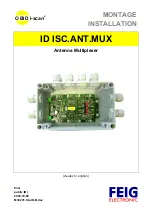
2. TECHNICAL SPECIFICATION
Display: 3.5 digit liquid crystal (LCD), maximum reading 3200 with floating
decimal point. Updates at 2 times per second. A responsive, 34 segment
analogue bargraph is shown below the digital read out.
Polarity: Automatic, implied for positive values, "-" to show negative
readings.
Overrange: O.L is displayed.
Zero: Automatic.
Low battery indication: A " " symbol appears when the voltage drops
below that required for correct operation.
Auto Power Off: After approx. 10 minutes.
Operating: 0 to 50°C @ < 70% relative humidity (RH).
Storage: -20 to 60°C, 0 to 80% RH (battery must be removed).
Temperature coefficient: Add (0.1 x % accuracy) per °C from 0 to 18°C,
and from 28 to 50°C.
Maximum altitude: 2,000m.
Battery: 1 x 9 volt, type PP3, MN1604, NEDA1604, JIS006P, IEC 6F22.
Battery life: 500 hours, typical (Zinc - carbon).
Dimensions: 143 x 68 x 47mm (5.6 x 2.7 x 1.9 inches).
Weight: 206g (7.3oz) with battery fitted.
Included: Set of test leads, 9V battery (fitted) & user manual.
DC VOLTS
Ranges: 320mV, 3.2V, 32V, 320V, 600V.
Resolution: 100µV
Accuracy: below 320mV, ± 1.2% rdg + 1 digit
3.2V range, ± 0.8% rdg + 1 digit
above 3.2V, ± 1.2% rdg + 1 digit
Input impedance: 1000M
Ω
up to 320mV
11M
Ω
on 3.2V range
10M
Ω
on all other ranges
Overload protection: 600V DC or AC rms.
However, electrical noise or intense electromagnetic fields in the vicinity of
the equipment may disturb the measurement circuit. Measurement
instruments will also respond to unwanted signals that may be present.
Users should exercise care and take appropriate precautions to avoid
misleading results in the presence of electromagnetic interference.
3. OPERATION
3.1. Precautions
Warning: Before using the instrument, read the Safety Information
Section, and examine it for damage or contamination (excessive dirt,
grease, etc.). Check the test leads for any evidence of cracked or
frayed insulation. If any abnormal conditions exist, do not use the
meter.
Warning: When using probes, keep your fingers behind the guards.
Warning: Measuring voltages which exceed the limits of the meter
may damage it and expose the operator to a shock hazard. Always
work within the meter voltage limits indicated on it's front panel.
Warning: Never ground yourself when taking electrical
measurements. Do not touch exposed metal pipes, outlets, fixtures
etc. which may be at ground potential. Keep your body insulated by
wearing dry clothing, rubber shoes or stand on a rubber mat, or other
suitable material.
3.2 Range selection
When the function (for example, AC Volts) has been selected and a signal
is present, the MM35 will autorange until the most suitable range has been
selected. The reading will be displayed and the meter will continue to
change range according to variations in the input.
5
8
























